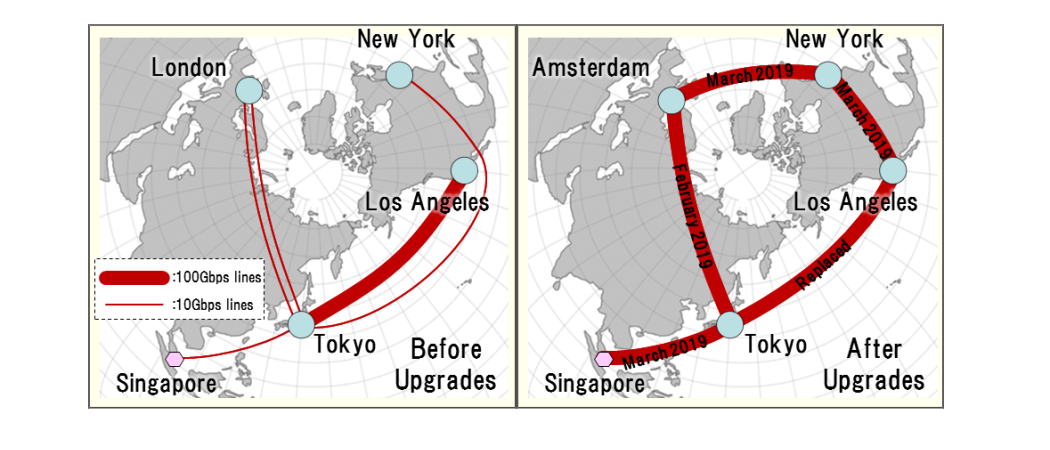
Scientific communities across Europe and Japan are set to benefit from an interconnection upgrade to 100Gbps between the pan-European GÉANT network and the Japanese Science Information Network (SINET), operated by the National Institute of Informatics (NII).
The new GÉANT-SINET interconnection in Amsterdam is part of the deployment of NII’s globe-spanning ring of 100Gbps links from Tokyo to Los Angeles, across to New York, onto Amsterdam and from there back to Tokyo, which was announced by NII last Friday.
In addition, NII has also upgraded SINET’s intraregional capacity within Asia at 100Gbps between Tokyo and Singapore, contributing capacity to the regional TEIN backbone.
The capacity boost comes in response to the increasing data transfer requirements of cutting-edge large-scale research projects, along with the demands from cloud computing and developments in artificial intelligence (AI) and Internet of Things (IoT) research.
The GÉANT-SINET link capacity upgrade from 20 to 100Gbps is set to accelerate in particular EU-Japanese collaborative scientific research on the Large Hadron Collider (LHC) experiments, the Belle II electron collider facility due to become operational next year at KEK in Tsukuba, with large parts of computation and storage resources being hosted in Europe, the ITER energy fusion reactor, and the Hayabusa2 and BepiColombo satellite missions, jointly operated by the European Space Agency Operation Centre (ESOC) and the Japanese Aerospace Exploration Agency (JAXA).
Erik Huizer, CEO GÉANT, commented: “Over the last few years we have come a long way. Up to 2016, connections between GÉANT and SINET had been achieved by peering in North America. Subsequently, SINET brought 2 x 10Gbps directly to GÉANT which meant that we could jointly support European and Japanese researchers in their cutting-edge scientific endeavours with faster and higher capacities as well as lower latency. As anticipated, we have since seen a major ramp-up of traffic exchanged over our networks as further EU-Japan user projects have come to fruition. We therefore welcome this substantial capacity upgrade in support of these exciting scientific ventures.”
Shigeo Urushidani, Deputy Director General of NII said: “With its 100Gbps full-mesh backbone, SINET5, the current network iteration launched in 2016, has opened up new possibilities for 3 million users at over 900 connected universities and research centres across Japan. Enhanced international connectivity, including a direct, high-capacity connection to Europe, is a vital element of NII’s strategy to support our user communities. We are very proud to have implemented this ultra-high-speed global network infrastructure, a milestone that will undoubtably contribute to advancing global scientific research.”
This release was first published 5 March 2019 by GÉANT.


 A unique international forum for public research organisations and companies to connect their external engagement with strategic interests around their R&D system.
A unique international forum for public research organisations and companies to connect their external engagement with strategic interests around their R&D system.